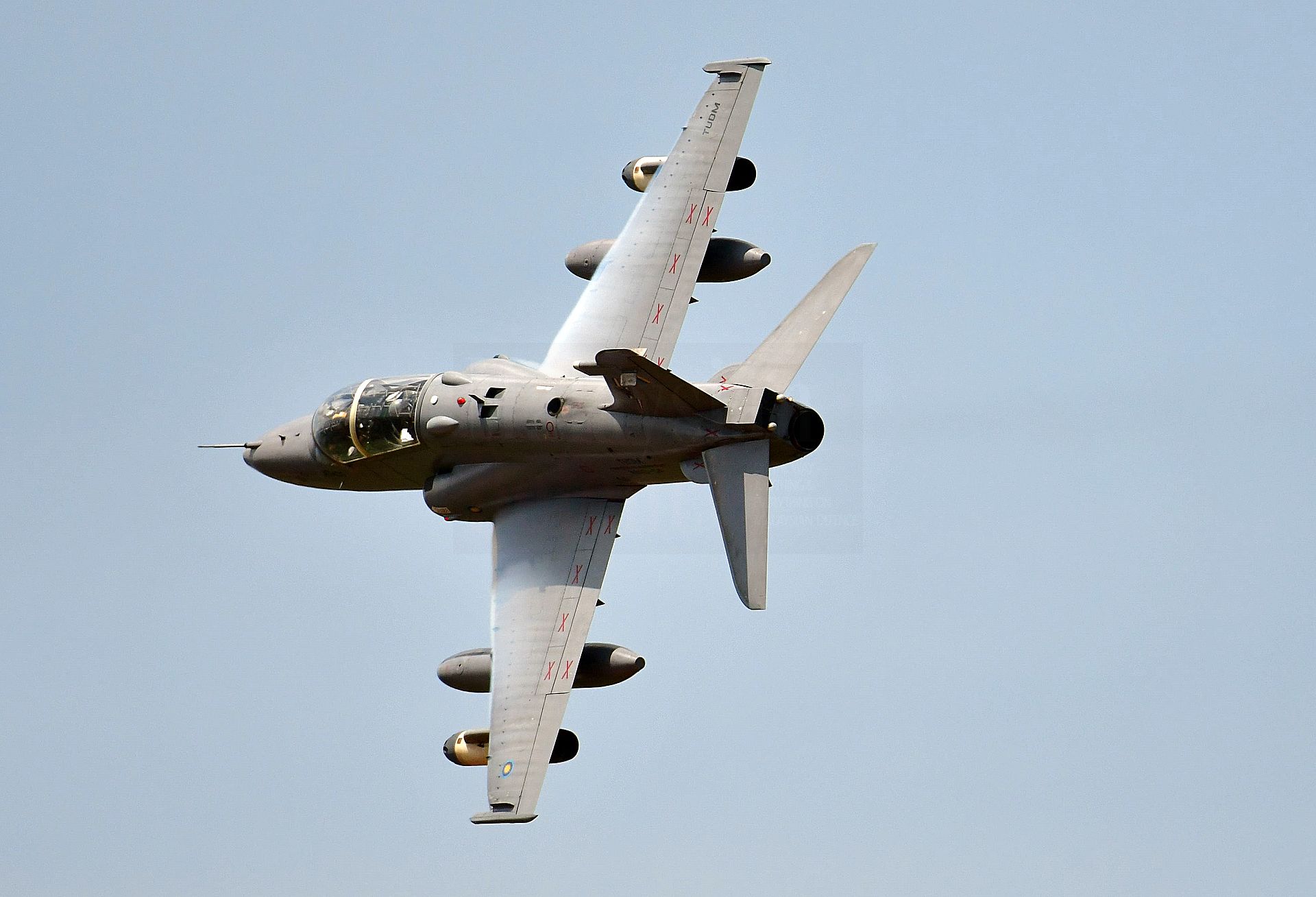
SHAH ALAM: TWO RMAF pilots were killed in the crash of their Hawk Mk 108 trainer during a check flight today. The crash occurred some 51km north of the Kuantan air base.
The pilots Major Mohd Hasri “Fixer” Zahari, 31, and Major Yazmi “Caser” Mohamed Yusof, 39, were found 20 metres apart from each other in a mangrove forest near Kampung Chukai in Kemaman, Terengganu around 2.30pm today.”
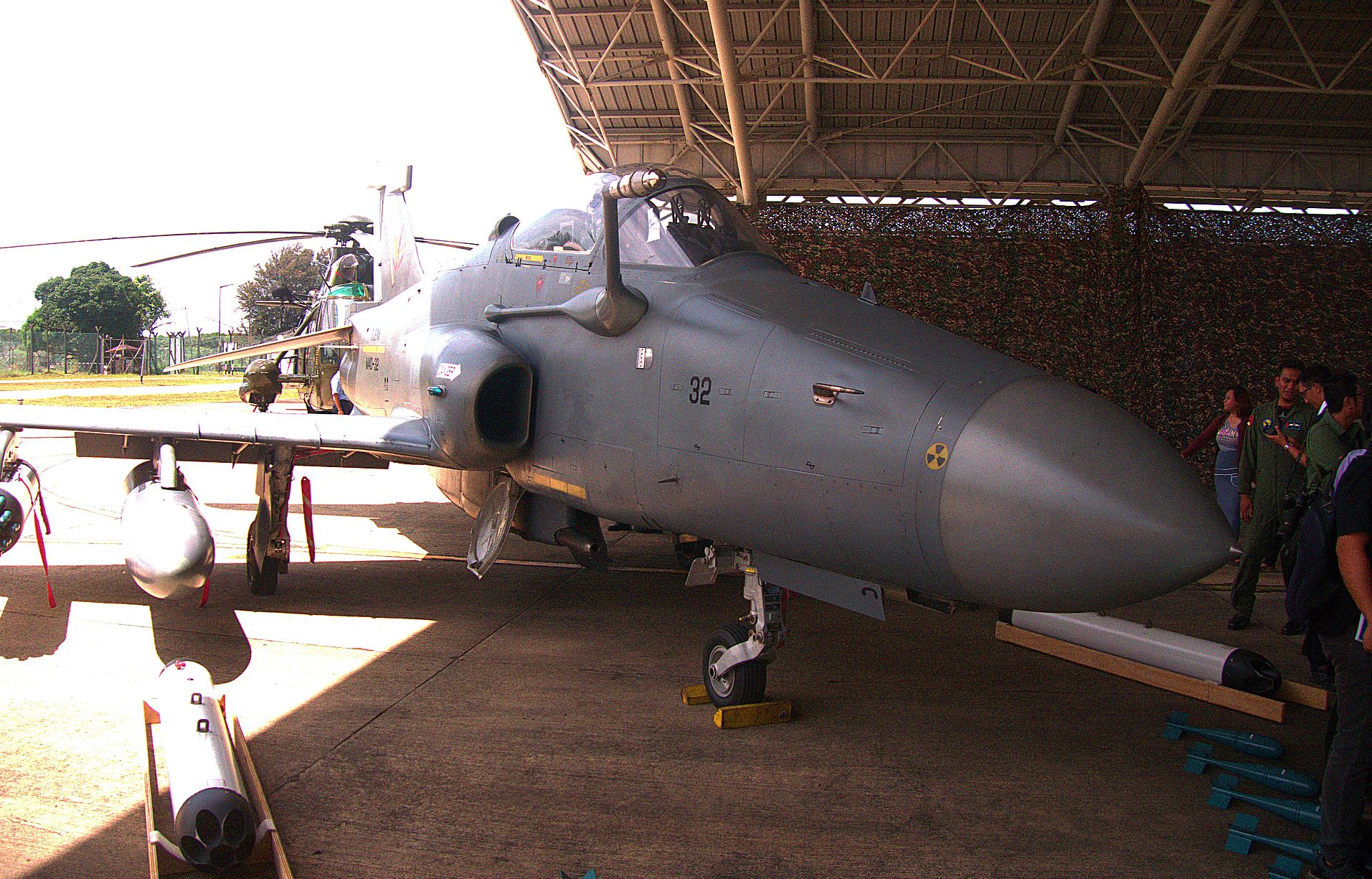
RMAF chief General Affendi Buang says the two airmen were believed to have ejected from the aircraft just before it crashed.
“We believe they ejected when the jet started to lose control. They were both experienced pilots, and are a huge lost to us,” he said.

Mohd Asri, who had been in service for 13 years, was from Bandar Baru Jempol, Negri Sembilan while Yazmi, who has been in service for 19 years, was from Kuala Lumpur. Both are from the No 6 Skuadron.
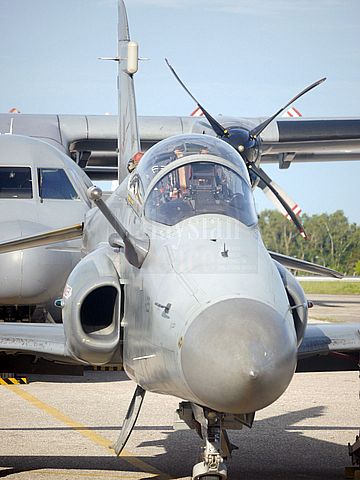
A board of inquiry has been set up to determine the cause of the crash. The wreck of the Hawk was found at 10.27am on June 16, a day after the bodies of the pilots were recovered. It was located some 100 meters from the bodies were recovered. From the picture of the site of the wreck it appears that the aircraft went straight down.
An earlier RMAF release stated the Hawk Mk 108 – M40-02 – went missing while flying around the Pahang and Terengganu border. The aircraft took off from the Kuantan airbase at 11am and contact was lost at 11.30am.
A SAR operation was subsequently activated.
*this is an updated post. The earlier one only stated the aircraft was missing based on the information available at that time.
— Malaysian Defence
If you like this post, buy me an espresso. Paypal Payment

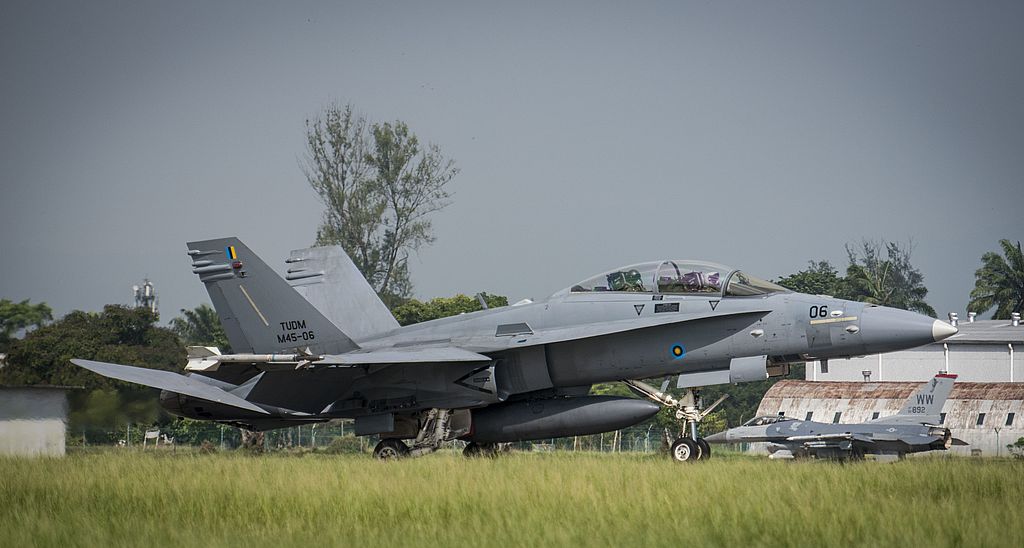
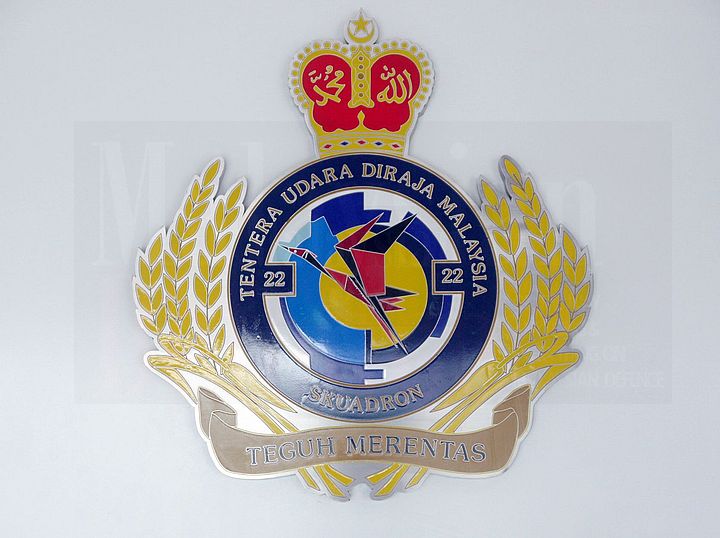

Oh god…
Hopefully the pilots are okay.
Hawk Should Be Replaced by M-346 or F/A-50.
Gosh, just pray the crew/s are ok. Rego?
Hope both pilot are safe…
on the other hand, we less another important unit…
It is confirmed that the aircraft has crashwd 51 km from Kuantan and 2 pilots perished. Condolences to all involved.
My condolences to the family of both pilots and to the RMAF.Today we lost two brave men,men who knew the dangers involved ,not for the sake of personal thrills and boast but in the defence of the country.This great nation of ours bid both farewell and thank you for the dedications and sacrifices shown.
May the 2 pilots RIP….
by the way, all our Hawk crashed also fatal?
Reply
No, some had managed to eject succesfully
Condolences to the family…
How much trainer that we have left? Afaik there was also the MB339C crash incident last year.
rip to the fallen
Reply
5 and 7 AFAIK
Right now we are left with
5 hawk 108 (of original 10)
7 mb339cm (of original 8, this replaced older 13 mb339am models)
The hawk 108 are employed basically as Operational Conversion Units for the hawk single seaters, in addition to normal operational taskings as evidenced during the firepower exercise.
The MB339CM is used in the normal definition of LIFT, ie Lead-In Fighter Trainer. Students learn basic fighter skills in the MB339CM before moving on to more complicated fighters like the hornet or flankers.
What could be done next is to streamline the training to only 1 stream using only 1 type of LIFT, and if possible same type for light fighter equivalent to the Hawk 208.
A question! Both pilots were battle hardened Hawk 208 drivers with their
own personal mounts….what were they doing in a 108?
Reply
Caser was also an instructor pilot, it helps to have an experience pilot to train the newbies, Fixer is probably qualifying to be an IP.
We’re basically stuck with either Hawk or M346 since they were offered as part of the MRCA package
Even Hawk is Still Capable but it must be Replaced Immidiately because it is Too Old Already. I recommand RMAF Choose JAS-39F Trainer Version or KAI T/A-50 As a LIFT and Advance Trainer.
For The Pilots and Families, Al-Fatihah for The Pilots who Were Crashed In Pahang.
Syed Amirul,
No the hawk need no replacement. They barely hit 12k cycles. Instead, the AF needs to learn how to manage asset life cycle.
The RMAF crash is the latest of 172 crashes that involved Bae Hawks of all variants worldwide.
@ m
12k cycles? What do you refer to as a cycle?
No matter, the issue right now is there is only 5 hawk 108. 1 aircraft cannot be flying in 2 places while also in maintenance at all the same time!
Syed Amirul – even Hawk is Still Capable but it must be Replaced Immidiately because it is Too Old Already.
It never ceases to amaze me why people are fond of insisting that the Hawks be replaced because they’re are old. The Hawks still have plenty of hours left and as long as the OEM still supports its and the RMAF is provided with adequate funds to maintain it; there is really NO urgency to prematurely retire the type. As it stands, there is no indication that this crash was caused by the aircraft’s age.
Michael – ”by the way, all our Hawk crashed also fatal?”
Some years ago there was a fatality but on the ground. During a briefing/training session an Martin Baker seat was ejected by mistake; one was killed.
Dundun – ”We’re basically stuck with either Hawk or M346 since they were offered as part of the MRCA package”
Were we offered the M346 as part of the MRCA package? How and by whom? This is news to me.
Prior to us getting the MBB-339CMs we were offered the Hawk AJT and BAE Systems brought a number of Malaysian journalists to the Warton plant as part of their PR efforts.
This is how a nation with full acountability to its people release statements regarding to crash investigation.
The incident is eerily similar to the tudm crash, 2 experienced pilots, ejecting into a swamp.
Probably those involved can use this as a good reference in investigating the crash.
http://www.rcaf-arc.forces.gc.ca/en/flight-safety/article-template-flight-safety.page?doc=ct155201-hawk-epilogue-flight-safety-investigation-report/hl6j9hve
…,
Take off and landing is a cycle. But unless the frame is task for afterburner VSTO, technically only landing is what matters. Managing an asset life cycle means that the initial budgeting of acquiring the asset should had already budget for all possible until end of life, including attrition.
In a way, short of frame is not AF’s problem. Instead, short of available frame is. One less frame actually helps them to have more budget bringing the rest of the frames to their potential. If of course they can take the opportunity to overhaul the slacking fleet management. Which, by the way will be very interesting to see what is the outcome of the investigation.
M,
Hawks Is need To Replaced or It Is Done Worst. But the M-346 or T/A-50 is a Best Solution to Replace Hawks and MB-339.
Azlan,
Plenty Hours ?, Bluffing are you. Still, Hawk for 26 years Is Not a Good Sign To Active back.
If we choose rafale, the M346 wil be offered as part of the package afaik. While for the typhoon, BAE would offer hawk upgrade and prolly extra airframe as part of the package
https://www.malaysiandefence.com/mrca-rafale-and-the-master/
Fighter airframe life is never calculated as a cycle, unlike a commercial airliner for example.
“”In a way, short of frame is not AF’s problem. Instead, short of available frame is.””
Don’t you see that right now the total available airframe is only 50% of the initial availability (only 5 remaining airframe out of initial 10). And if you factor in major overhauls, periodic inspections, and you are left with what, 30% at best?? What kind of full potential can a fleet of just 5 airframes can do? What kind of potential a squadron of 5 trainers can do?
If i am the family of the pilots, i want an investigation report at least on par of the canadian air force public release.
What we need to know.
1) is it engine related? As the low pressure turbine blades is a known failure point.
2) why didn’t they survive the ejection? The autopsy should reveal this. Also the canopy. There is instances that the MDC (miniture detonation cord) which will break the canopy plexiglass did not function, causing the pilots head to slam onto the canopy.
3) records of the recently done overhaul.
Syed – ”Plenty Hours ?, Bluffing are you.”
No I’m not ”bluffing’. If you can provide any sources to indicate that I’m wrong and that the air frames of the Hawks are running out of hours please share with us. Similarly if you can provide any sources to indicate that Hawk crashes are caused by old age [whether the air frame or the various components], please share with us.
Syed – ”Still, Hawk for 26 years Is Not a Good Sign To Active back.”
Less to do with the age but with issues as the number of hours the Hawks have been flown, whether a number of components are still supported by the OEMS, whether the Adours have been overhauled on schedule, whether there are enough funds to adequately maintain the Hawks, etc, etc – these are the factors that come into play; not just age…… BTW, there are even older Hawks in service; Hawks which have accumulated much more hours than ours.
……,
A contract for overhauls was signed in 2009. Checks were performed on the test bed at Butterworth and parts needing work were sent back to the UK. If I remember correctly, Rolls Royce issued a statement saying that our Adours had flown about 40,000 hours [by 2009]. The same year we also signed a contract for spares.
Interestingly the NST quoted the Defence Mnister saying that there are plans to increase the number of Hawks. There were indeed plans to get 4-5 100s as attrition replacements in the early to mid-2000’s but I’m not sure if the MAF still has that requirement.
…,
Unless there is major change in physics that I missed. I dont see how the british would have a different way to defined their product.
As i said, using full potential assumption of the asset to judge if the AF have enough frame is not the point here.
Plane crash has only two possibility: either pilot error or maintenance error. Same goes to the ejecting procedure.
Back in the 1970s,the RMAF lost a CA32 Avon Sabre near Penang and the crash was attributed to a screw from the nose cowling which came loose and was sucked into the turbine.I guess the investigating officers then were more transparent in such matters compare to what’s happening today.
Reply
Actually all of the accident investigation reports until the recent ones are pretty detailed. The problem is that the report is never made public in its entirety apart from short statements.
@ m
It is you who does not understand the physics of different aircrafts.
Airframe life by “cycles” is used for airframes with pressurized fuselage, usually airliners. The frequent pressurization and depressurization of the fuselage will induce fatigue to the airframe.
Fighters meanwhile, airframe life is calculated with EFH ie equivalent flight hour method, as fatigue is induced by G loadings to the airframe during maneuvers.
Plane crash has many factors, weather, another aircraft wake turbulence, material fatigue, design, manufacturing and others; not just pilot or maintenance.
m, you are on my ignore list from now on.
@ azlan
I completely agree to just continue using the hawks, if there is adequate numbers of it in the beginning. As it is the quantity of hawk airframes is simply too few to be operated by 2 fighter squadrons.
If continue using hawks is what the airforce want, i would propose the chief to have a working dialogue with Royal Airforce of Oman to look at the possibility of getting their current hawk 103(3aircraft)/115(1)/203(10) as they have ordered the new hawk 166.
If that is not possible, consider selling the hawks while it is still in usable condition, and look at getting something better that is around the same cost of getting brand new hawks.
Btw even if dilligent maintenance is done on the hawks, as it is the platform has quite a few issues that requires additional checks above the normal scheduled maintenances. The basic design was drawn before there is any computerized finite element studies. The airframe design was fully reviewed from mark 120 onwards, giving it 4x the fatigue life, but for those before that, there is a lot of ad hoc “band aid” solutions to the various technical deficiencies of the hawk design.
As it is the hawk is a very compromised design (airframe and engine) that is still selling at a premium. There are plenty other better aircraft than the hawk for similar asking price.
…,
Didn’t know you offer alternative manual. Can we switch our subscription to you?
Your BS aside, no one OEM I know of uses EFH, or whatever that means. The closest thing is the “adjusted hour” system calculated by G maneuver logged by the pilot in unit of seconds. G load itself depends on weight and almost none of the fighter today can do more than 7G at load aside from meaningless dive. And on a Hawk, its 7G at half fuel certain pales compare to an touch and go practice where the frame is smashing the ground at Vz 500fps.
Cycle is a preferred counter by all OEMs except one I know of, which by the way has no operator in ASEAN. Itself is a normalize of expected aeroelastic and has nothing to do with pressurized or not.
None taken. My only intention is to stop BS, that all
……. – ” As it is the quantity of hawk airframes is simply too few to be operated by 2 fighter squadrons.”
I get what you mean with regards to the low numbers and the 2 squadrons. The RMAF will have reasons why – despite the low numbers – the Hawks are distributed into 2 squadrons. There are administrative, seniority and other issues at play but yes, I agree that on paper; logic would dictate that all the Hawks are consolidated into a single squadron. This would simplify things greatly.
…… – ”If that is not possible, consider selling the hawks while it is still in usable condition,”
Sound in theory but the reality is that until the MRCAs enter service, the RMAF will never consider selling the Hawks period/full stop. Yes we can consider selling the Hawks and getting something else but that would still leave us with a period without the Hawks. Selling the Hawks would also mean that there has to be a buyer interested in single seater Hawks as opposed to one who desires 2 seater Hawks [we have 3-4 left?] to be used as trainers [like most Hawk users].
Despite whatever issues they have the Hawk is still a fairly reliable platform and the numbers – small they are – are barely sufficient for our current operational needs. It will be a different story of course if we are suddenly faced with a scenario that calls for high tempo protracted ops.
On the matter of Board of Inquiries. Like Marhalim said, they are very thorough/detailed but are just not made public. Also, the Board of Inquiry can make recommendations but whether these are implemented depends on the politicians. With the A-4s a Board of Inquiry was set up and including representation from the RNZAF. It recommended new engines but it was decided not to spend any more cash on the A-4s and to focus on a new replacement. Board of Inquiries also can include the participation of OEMs but if it’s found that the cause of the crash was due to something that wasn’t certified by the OEM, help from the OEM would be limited and whatever warranty there is would be void. The first MBB-39A we lost was whilst it was still under warranty and we received a replacement for free.
m – ”Plane crash has only two possibility: either pilot error or maintenance error.
You left out weather. Bad or adverse weather can cause crashes even without human error or technical/maintenance issues.
At the end of the day, flying a jet – especially tactically is dangerous – and crashes can occur for a variety of reasons; even with well trained and experienced crews in a well maintained jet as the following illustrates.
”Controlled flight into terrain happens only when pilot disorientation occurs, meaning a pilot may well feel that he/she is flying straight & level with the sky above, but in reality the aircraft is upside-down with the nose pointing towards Earth. When this happens, the pilot feel that he/she is gaining altitude when in reality the aircraft is headed downward toward approaching terrain & a collision takes place in an instant. This happens when the aircrew is doesn’t trust or ignores the on-board instruments like the artificial horizon & attitude indicators & is instead willing to trust what one sees visually. This usually happens when bad weather suddenly appears & visibility suddenly drops to zero, leading to pilot disorientation & mis-judgement, especially among pilots with few flying hours in operational combat aircraft. Any experienced pilot will then automatically begin trusting his on-board instrument displays for maintaining situational awareness.”
…… – ”There are plenty other better aircraft than the hawk for similar asking price.”
Very subjective…. There will be users who feel that the Hawk bests suits their needs; just like they are users who felt that the M346 was a better LIFT for them. In addition to specs/performance, price and politics; I suppose it also depends on what a particular user wants its Hawks to do. I’m no Hawk fan boy but the fact remains that the Hawk has proven to be an export success and a versatile design despite whatever limitations it has.
On another note, Zimbabwean Hawks saw quite a bit of action in the Congo flying many sorties using dumb bombs and clusters. Apart from us, Indonesia and Zimbabwe I can’t think of any other users who have used their Hawks in combat.
Hmm I detect a middle men mafia here…
BTW Please brush up on your technicalities as my BS is actually clearer than your facts.
For an aircraft, a hard landing is considered as Vz ~10fps, ie 600fpm with around -2G force.
Your statement of touch and go practice Vz of 500fps is a sink rate of 30,000fpm, which is around Mach 0.45 vertical speed. That is not a touch and go landing but a nosedive to the ground.
…,
I made a typo, and you won a nitpick. I give you that.
Bonus for you, an example taken out of FM. Why is a loaded frame allowed 3g maneuver at all direction but have to dump fuel before landing?
In short total energy is in play. It also shows how far you are willing to go even without personnel experience in the subject whatsoever. There is much to learn than adhoc google for equations to fit your claim.
Azlan,
Yes, if you take into account of raw data that includes GA and even very light. But how many of the all weather IFR with weather radar went down were weather caused and not weather related? If we take out cross wind at landing and wet runway, how many “weather caused” left in the equation?
And your excerpt exactly answers your query. In fact DCA for example, just published a new policy addressing the exact problem. If you are interested, for the past decade aviation safety were called for 3 things: pilot training, maintenance quality and traffic control. Or the latest fancy keywords: human factor, operation and organization. I believe at some point you have heard aviation is the safest mode of transport, without context: aircraft and support system are thoroughly designed and built to exactly what it is designed to do, until someone f-ed it up.
@ m
You just highlighted one of the key weak points of the hawk. A loaded airframe limited to just 3g maneuvers shows how fragile the hawk airframe is (im sure it is not by design, but after some structural failures happened. That ia why the wingtip missile rails are removed right? That is also why i said the original hawk structural calculations is crap). How can you dogfight (as the hawk 200 is also used in air defence right) when you are limited to just 3g? The pc-7 mk2, in utility catagory with max weapons load, is cleared to 4.5g.
****************
”Plane crash has only two possibility: either pilot error or maintenance error”
Remember most of the early tudm hawk crashes are caused not by maintenance error, but because of unforeseen failure modes that is not in the maintenance procedures at the time. So it is actually a design failure, not a maintenance error.
Crosswind is also weather related. And if by your wording, crosswinds cannot be a possibility in a crash. So do you say the pc-7 mk2 upside down crash in langkawi with the experienced pilots is a pilot error not weather related?